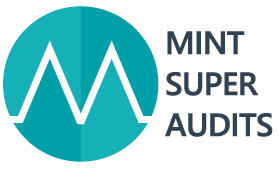Recent updates have been made to the Australian Federal Budget Update for 2023. One of them relates to the confirmation of a reduction in tax concessions for individuals whose total superannuation balance exceeds $3 million beginning on 1 July 2025.
Individuals with total superannuation balances exceeding $3,000,000 will be subject to a tax rate of 30% from 1 July 2025, whereas those with balances below $3,000,000 will be taxed between 15% and 0% if held in a retirement phase pension account. In addition, the Budget documents indicate that this measure will incorporate earnings calculated on defined benefit fund interests.
With more details to be finalised, we are uncertain about how the Government has determined the “earnings” in the person’s total superannuation balance and which methodology will be applied. This is the space where we need to keep a close eye.

Table of Contents
Non-arm’s length income (NALI)
Government proposes limiting the amount of a fund’s income that could be taxed as NALI to twice the amount of an impacted ‘general’ expense:
This proposal seeks to alter the NALI regulations that relate to superannuation fund expenditure by:
- Restricting small Australian businesses and self-managed retirement funds’ income.
- Funds governed by the Australian Prudential Regulation Authority (APRA) and subject to NALI taxation at a rate of 200% of the ordinary expense threshold. Furthermore, fund contributions will not be included in NALI taxable income.
- Large funds under APRA regulation will be exempt from NALI’s general and specific expense rules.
- Expenses made before the current tax year will not be counted.
An earlier Treasury proposal had set the cap at five times the level of the general expenditure gap for income subject to the highest marginal tax rate. Therefore, at first glance, it would appear that SMSF trustees would benefit from this proposal.
Additional details are needed to ascertain whether this figure is based on the value of the general expense itself or the extent of the general expenditure breach – the difference between the amount that would have been charged for the general expense under an arm’s-length arrangement and the amount that was actually charged to the fund.
Superannuation Guarantee – Changes to payment frequency
Starting on 1 July 2026, mandatory SG contributions must be included in regular salary and wage payments. Currently, SG payments to employees are only required to be made quarterly.
Soon, Superannuation payments will be made more frequently to coincide with salary and wage payments under the new plan, giving workers a clearer picture of their benefits and making it easier for the ATO to recoup any overpayments.
Better retirement results can also be expected from increased payment frequency.
The ATO, payroll service providers, and superannuation funds will all have sufficient time to implement the required system changes prior to the 1 July 2026 implementation date, and businesses will have the time to alter their cash flow procedures. To accommodate this new schedule of payments, adjustments must be made to the structure of the SG charge.
The government will hold stakeholder meetings to determine the best approach to these adjustments, with the final plan being considered as part of the 2024–25 budget. The Australian Taxation Office will have more funds at their disposal to pursue unclaimed superannuation benefits.
In terms of contribution planning, this is of the utmost importance and is anticipated to lead to fewer accidental contribution cap breaches.
Expanding Part IVA General Anti-avoidance
For the sake of a more honest tax system, the government has decided to extend the reach of the general anti-avoidance rule for income tax (Part IVA of the Income Tax Assessment Act of 1936) to cover all schemes that result in an Australian income tax benefit, regardless of whether or not the primary purpose of the scheme was to minimise foreign income tax.
For tax years beginning on or after 1 July 2024, this legislation will take effect regardless of when the scheme was first created.
The types of expenditures that will be affected by this action are not specified in the Budget documents. We’re worried, though, that this could hamper the ability of expats in Australia to roll over their pension savings into a superannuation plan there. The taxpayer must comply with the taxation and superannuation requirements of both Australia and the nation containing the pension fund before moving monies into an Australian superannuation fund.
Scams resolutions
The government would spend $86.5 million on countering internet scams and fraud over the course of four years, commencing in 2023–2024. The funds will be used to help with:
- To improve government and private sector information sharing concerning scams, the Australian Competition and Consumer Commission should set up a National Anti-Scam Centre.
- With this seed money, the Australian Securities and Investments Commission (ASIC) will be better equipped to root out and shut down investment scam websites like phishing ones.
Additional financing for government agencies to protect consumers from scams and internet fraud is essential in the modern era. The need for more funding and manpower for regulatory bodies has been brought into the spotlight by recent high-profile instances.
It is crucial to prioritise the trust, safety, and security of your clients and investors. From the standpoint of SMSFs, it was interesting to observe that the ATO was left out of this.
Contact Us

Our team at Mint Super Audit stays up-to-date with the latest legislative changes to ensure your SMSF audits complies with the law. Contact us today to discuss your specific situation and to ensure that you are well-informed and prepared for any potential impacts. We are dedicated to helping you navigate through these changes and make informed decisions regarding your superannuation.




